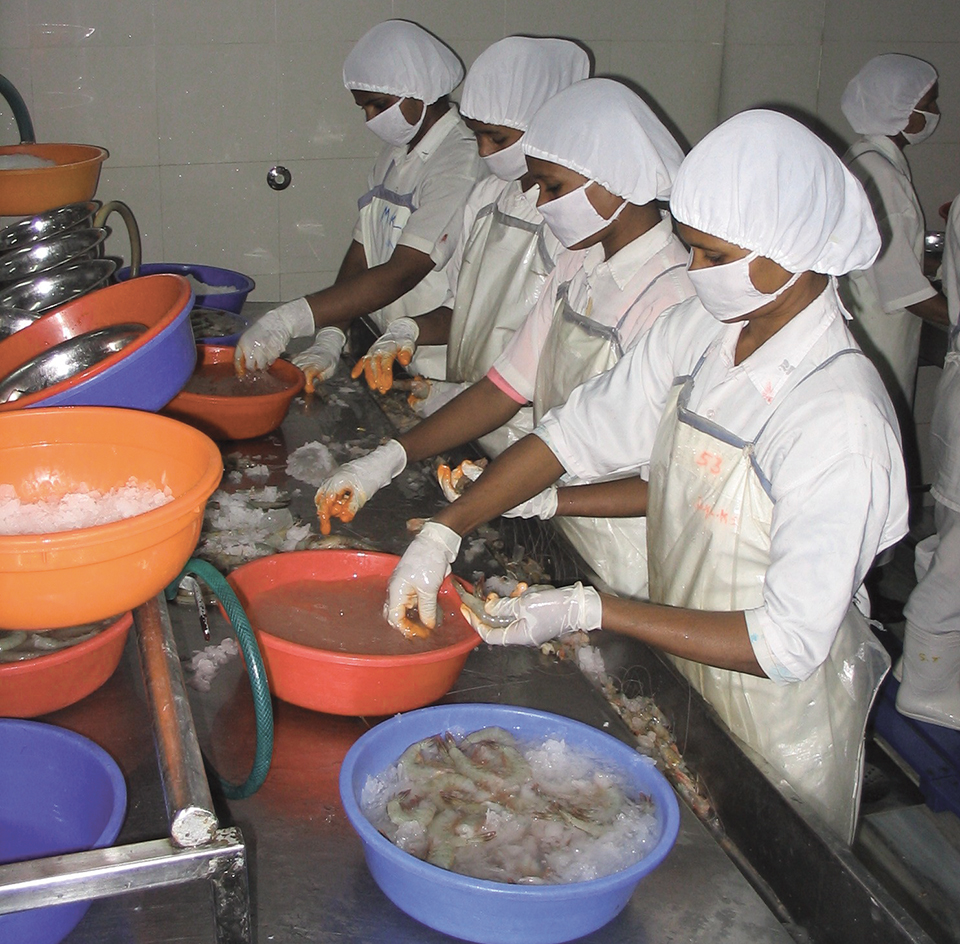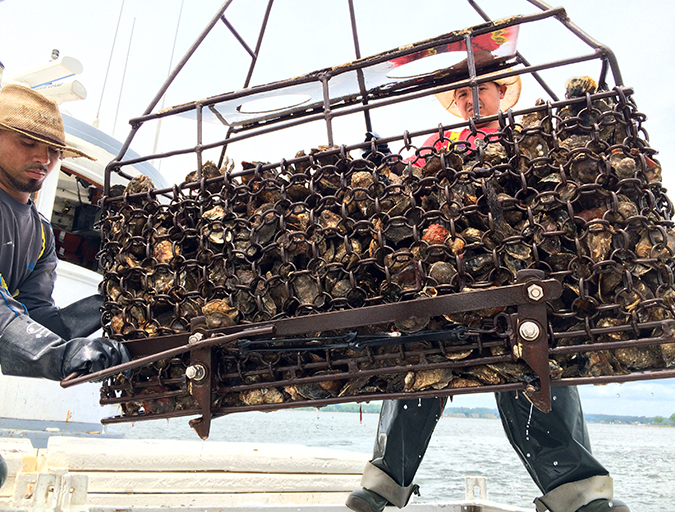Industry, regulators must improve clarity, accuracy of food allergen labeling

Although the best estimates suggest that less than 2 percent of the adult population and 5 percent of children in the United States suffer from food allergies, allergies are a concern for manufacturers and retailers of fish and shellfish products. Most seafood allergies result in minor symptoms such as hay fever, nausea, vomiting, diarrhea, hives, and asthma. However, some individuals experience severe and occasionally fatal anaphylactic reactions within 30 minutes of exposure to seafood products.
If anaphylactic shock results from allergen ingestion, adrenalin (epinephrine) is immediately supplied, followed by hospitalization and close monitoring. If adrenalin is administered within one hour after symptoms appear, most children survive.
Allergen nomenclature
An allergen nomenclature has been adopted in which allergens are designated according to the accepted taxonomic name of their source. The first three letters of the species genus are used, followed by the first letter of the species, then an Arabic number which corresponds to the order of identification.
Generally the same number is used to designate homologous allergens in related species. For example, in brown shrimp (Penaeus aztecus) an allergen is Pen a 1, and the homologous molecule in Indian shrimp (Penaeus indicus) is Pen i 1. Examples of this nomenclature in describing major seafood allergens are provided in Table 1.
Flick, Major seafood allergens, Table 1
| Allergen Source | Allergens (systematic, original names) |
|---|---|
| Gadus callarias (cod) | Gad c 1 parvalbumin (originally allergen M) |
| Penaeus aztecus (brown shrimp) | Pen a 1 tropomyosin |
| Penaeus indicus (Indian shrimp) | Pen i 1 tropomyosin |
| Metapenaeus enis (greasyback shrimp) | Met e 1 tropomyosin |
| Crassostrea gigas (Pacific oyster) | Cra g 1 tropomyosin |
Common allergenic seafood
The consumption of fish and inhalation of cooking vapors are reported causes of allergic reactions. Most of these reports, which are among the most common for allergens, refer only to fish in general and do not specify particular species.
Hypersensitivity to fish has been observed in countries where fish consumption is above average, such as Scandinavian countries. Research with cod-allergic patients showed that one mg of purified Gad c 1 placed in a meatball resulted in an allergic reaction. It was reported that one g or less of catfish and four g or less of codfish or snapper elicited allergic reactions in current, controlled tests. Many individuals with a history of adverse reactions to fish also report adverse reactions to crustaceans, especially shrimp.
The most commonly consumed crustaceans in the U.S. – shrimp, crabs, lobsters, and crawfish, all commonly cause hypersensitivity. Although the number of individuals with the potential to develop a crustacean allergy is unknown, it has been conservatively estimated at more than 250,000, with a higher incidence of allergy in Atlantic, Gulf, and Pacific coast states – areas where greater amounts of the products are consumed.
Studies of individuals with shrimp allergies have shown that consumption of as few as four shrimp results in adverse reaction. Only one or two g of shrimp can result in an anaphylactic reaction in highly sensitive individuals. Nothing has been reported on the amounts of crab, lobster, or crawfish required to trigger a reaction, but they are likely similar to that of shrimp. For those with food allergies, the only sure way to prevent problems is to completely avoid the foods known to cause allergic responses.
Mollusks have also been implicated in immune-mediated reactions. However, mollusk allergies have not been well studied.
Occupational allergies
In adults, reactions to food allergens also occur in occupational environments (Tables 2 and 3). However, it should be noted that the bee-moth has produced allergies in bait fish breeders. In susceptible individuals, occupational exposure can result in the development of a heightened immune sensitivity to food proteins, often through the respiratory or dermal route. Continued exposure to these allergens results in rhinitis, asthma, hives, conjunctivitis, and in some instances, systemic anaphylaxis.
Flick, Materials known to induce occupational diseases, Table 2
| Agent/Animal | ||
|---|---|---|
| Shrimp | Seafood processing | Asthma, dermatitis |
| Crabs (inc. king and snow) | Seafood processing | Asthma |
| Oysters | Culture oyster workers | Asthma |
| Shrimp meal | Aquaculture | Asthma |
| Fishmeal | Factory workers | Asthma |
| Mother of pearl | Button factory workers | Asthma |
| Sea squirts | Oyster shuckers | Asthma |
| Sea shells | Shell grinders | Asthma |
Flick, Occupational diseases in seafood-related industries, Table 3
| Occupation | Occupational Exposure | Disease |
|---|---|---|
| Fish factory workers | Fish | Dermatitis, hives |
| Caterers | Shrimp, fish | Dermatitis, hives |
| Fish market workers | Fish | Hives |
| Oyster shuckers | Oysters | Dermatitis, hives |
| Mussel processors | Mussels | Dermatitis |
| Food handlers | Fish, shellfish | Dermatitis |
| Fishermen | Fish, rubber boots | Skin diseases |
| Fish workers | Fish | Hives |
| Cooks | Fish, lobsters | Asthma, hives |
| Fishnet repairers | Fishnets | Dermatitis |
The most important manifestation of occupationally acquired food allergy is occupational asthma. Adult-acquired asthma results from occupational exposure to chemicals, toxins, and natural proteins. Among snow crab workers, for example, occupational asthma typically develops in 15 percent of the work force as a result of exposure to water vapor from cooking the crabs. Snow crab processors who become sensitized through the respiratory route may eventually react when they ingest cooked crab in a meal.
Food intolerance
Many adverse reactions to foods are mediated by mechanisms that do not involve the immune system. Some of these reactions may be confused with allergy. These reactions may be due to naturally occurring toxicants, microbial or chemical food contaminants, or metabolic disorders.
One example of food intolerance that is commonly mislabeled as an allergic reaction is scombroid food poisoning, which arises from a microbe-derived food contaminant. Scombroid and scombroid-like fish (tuna, bonito, mahimahi, bluefish) become spoiled through contact with certain microorganisms that appear naturally in the intestinal tracts of the fish.
The microorganisms degrade certain amino acids into amines (histamine, cadaverine, putrescine) which at first cause a peppery, burning sensation in the mouth. Further symptoms include nausea, vomiting, abdominal cramps and diarrhea. The symptoms usually last two to eight hours.
Allergen labeling
Ingredient labeling requirements with regard to allergens vary by country. USFDA requires that if an ingredient is present in a food, it should be included on the ingredient list. The United Kingdom, however, does not require an ingredient to be included in a label if its concentration is less than 25 percent, even if the ingredient is an allergen.
In November 2003, the European Community eliminated the 25 percent regulation and mandated the unambiguous inclusion of 11 allergens plus sulfites in ingredient lists. Products that do not comply with the directive will be prohibited as of Nov. 25, 2005, although those labeled or brought to market prior to that date may be sold until supplies are exhausted.
Both regulators and industry players are aware of the need to improve the clarity and accuracy of food allergen labeling. Potential allergens should be unambiguously named. For example, labelers should list milk, milk protein, or milk derivative rather than terms the general public may not readily understand, such as caseinate or whey protein. If cross contamination could occur during the manufacturing process between foods containing allergens and nonallergenic foods, “may contain” statements can be added labeling, although this is not mandatory. Such statements can not be used as a substitute for compliance with good manufacturing practices.
Allergen testing and control
The optimum approach for fish and shellfish firms is to develop specific allergen awareness and control plans to ensure that allergenic compounds are included in HACCP programs. HACCP planners should review all labels to ensure listing of all ingredients and be sure that employees are properly trained. They should also confirm that label inventories are effectively managed, plants are sufficiently cleaned to prevent cross contamination, and ingredients are tested to ensure compliance with buyer specifications.
Control strategies might include producing allergen-containing products at the end of the work day or developing a rework plan that includes designated uses for rework, usage re-cords, and other controls to track allergens. Equipment should be properly designed to prevent contamination. Analyzing the movement of raw material and ingredients, color coding maintenance tools and cleaning materials, and producing allergen-containing products in successive batches are additional measures.
Laboratory testing for the presence of allergens has become increasingly easy in recent years. Contract laboratories can perform many analyses at reasonable costs, and cost-effective rapid-detection kits are available for in-plant use. If firms desire to perform in-house testing, it is highly recommended that the accuracy of the chosen tests be determined with respect to the products’ ingredients.
Conclusion
The precise prevalence of fish and shellfish allergies is unknown, but these foods commonly cause food allergies. Finfish allergies are common in children, whereas shellfish allergies tend to be more common in adults.
Allergens can be a serious problem for sensitive individuals. With food safety paramount in today’s marketplace, the implementation of effective allergen-prevention plans will instill confidence in firms’ products and help minimize product recalls, regulatory actions, and product litigation.
(Editor’s Note: This article was originally published in the June 2004 print edition of the Global Aquaculture Advocate.)
Now that you've reached the end of the article ...
… please consider supporting GSA’s mission to advance responsible seafood practices through education, advocacy and third-party assurances. The Advocate aims to document the evolution of responsible seafood practices and share the expansive knowledge of our vast network of contributors.
By becoming a Global Seafood Alliance member, you’re ensuring that all of the pre-competitive work we do through member benefits, resources and events can continue. Individual membership costs just $50 a year.
Not a GSA member? Join us.
Author
-

George J. Flick, Jr., Ph.D.
Food Science and Technology Department
Virginia Tech/Virginia Sea Grant (0418)
Blacksburg, Virginia 24061 USA[117,100,101,46,116,118,64,103,107,99,105,108,102]
Tagged With
Related Posts

Health & Welfare
Seafood allergies: Control, prevention key to workplace management
Occupational seafood allergies can manifest as asthma, rhinitis, conjunctivitis, urticaria, and dermatitis. Anaphylactic reactions have also been reported.

Intelligence
How we can help children reach for seafood
Seafood has many health benefits for the young and the not-so young alike. Educating the next generation of consumers – as children – and their parents about healthier lifestyle decisions must be a priority for everyone in the seafood business.

Intelligence
U.S. consumers not achieving seafood guidelines
Research found that 80 to 90 percent of U.S. consumers did not meet federal dietary seafood recommendations and that seafood consumption varies significantly among socio-demographic groups.

Intelligence
As ocean temperatures rise, so too will vibrio outbreaks
A study using a half-century of data has linked climate change and warming sea temperatures with an increase in illnesses from the common vibrio bacteria. Shellfish growers, fighting a particularly virulent strain of Vibrio parahaemolyticus, are changing their harvest protocols.

